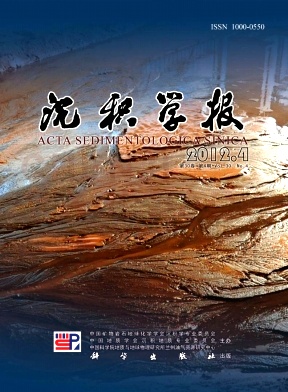Reconstruction of ProvenanceSedimentary System of the First Member of the Paleogene Shahejie Formationin the Qikou Sag, Bohai Bay Basin
- Publish Date: 2012-08-10
-
Key words:
- /
- the Qikou Sag /
- the first member of Shahejie Formation /
- provenancesedimentary system
Abstract: Accoding to the characteristics of the Bouguer gravity anomalies, the source and deposition areas were macroscopically distinguished in this paper. Based on the characteristics of heavy mineral, the location and extent of the source areas were described. In addition, the direction of the sources were determined on the basis of seismic reflection characteristics. Furthermore, the characteristics of provenancesedimentary system were finely pictured by the distribution of sandbody, and could be further verified through geochemical characteristics. Different ways exerted respective superiority, and various means revised each other, the provenancesedimentary system of the first member of the Paleogene Shahejie Formation in the Qikou sag of the Bohai bay basin was reconstructed by these ways. The results suggested that, there were five sources in the first member of Shahejie Formation in the Qikou sag, that were Gegu source, Xiaozhan source, Zengfutai source, Qianquan source and Beidagang buried hill source. The Gegu source was the largest source in the Qikou sag, the direction was overall the northwest to southeast, it provided sediments for Banqiao sag, and the sediments were further promoted into Qikou sag mainly in two directions but terminated at the downthrow wall of the Qizhong fault, the migration direction of the source location evolved from the southwest to the northeast in the first member of the Shahejie Formation, but the scale of the migration is small. The Xiaozhan source developed along Xiaozhan to Baishuitou area, the extent was small, the sediments were promoted into Banqiao sag in SSE and SE, the migration direction of the source location evolved from northeast to southwest. The scale of the Zengfutai source was limited which was influenced by the Dazhangtuo fault, the sediments filled into the Banqiao sag, and the source location migrated along northeast. The location of the Qianquan source was unstable, the migration direction of the source location evolved from west to northeast, the extent of migration was large scale, the sediments were promoted into Banqiao sag in two directions. The sediments of the Beidagang buried hill source were carried to the Qibei sag along the downthrow wall of the Gangxi and Gangdong fault and extended to the Zhangbei fault which showed from northwest to southeast, and being frequent bifurcation when impelled into Mapengkou and Gaochentou area. Combined with well cores, drilling, logging and paleobiology, it showed that Banqiao sag developed fan delta sedimentary system which was controlled by the Cangdong fault, that included fan delta plain, fan delta front and frontfan delta. The Qikou sag developed deeplake turbidite sedimentary system which was influenced by the strong activity of Changlu fault, it was involved from the sandbody of the fan delta sedimentary system which controlled by the Gegu source. The Qibei sag developed deeplake turbidite sedimentary system located in the background of the semi deeplake and deeplake controlled by the Gangxi and Gangdong fault. The distribution of sedimentary system was obviously influenced by the direction, shape and extent of the source area. The research proved that this comprehensive analysis of multimethods was effective for the reconstruction of provenancesedimentary system.
| Citation: | Reconstruction of ProvenanceSedimentary System of the First Member of the Paleogene Shahejie Formationin the Qikou Sag, Bohai Bay Basin[J]. Acta Sedimentologica Sinica, 2012, 30(4): 629-638. |






 DownLoad:
DownLoad: